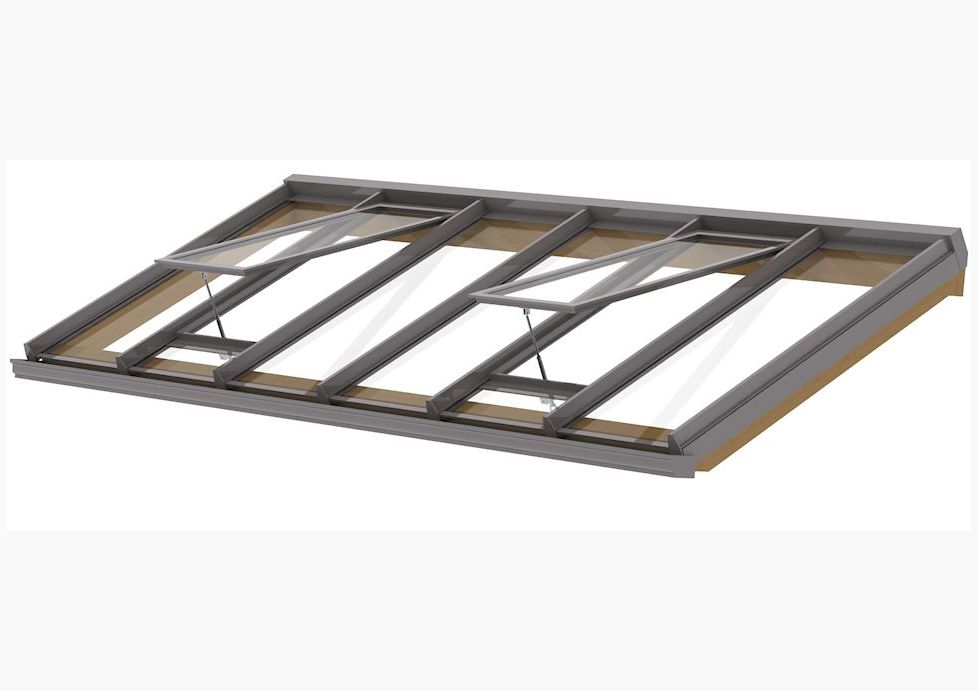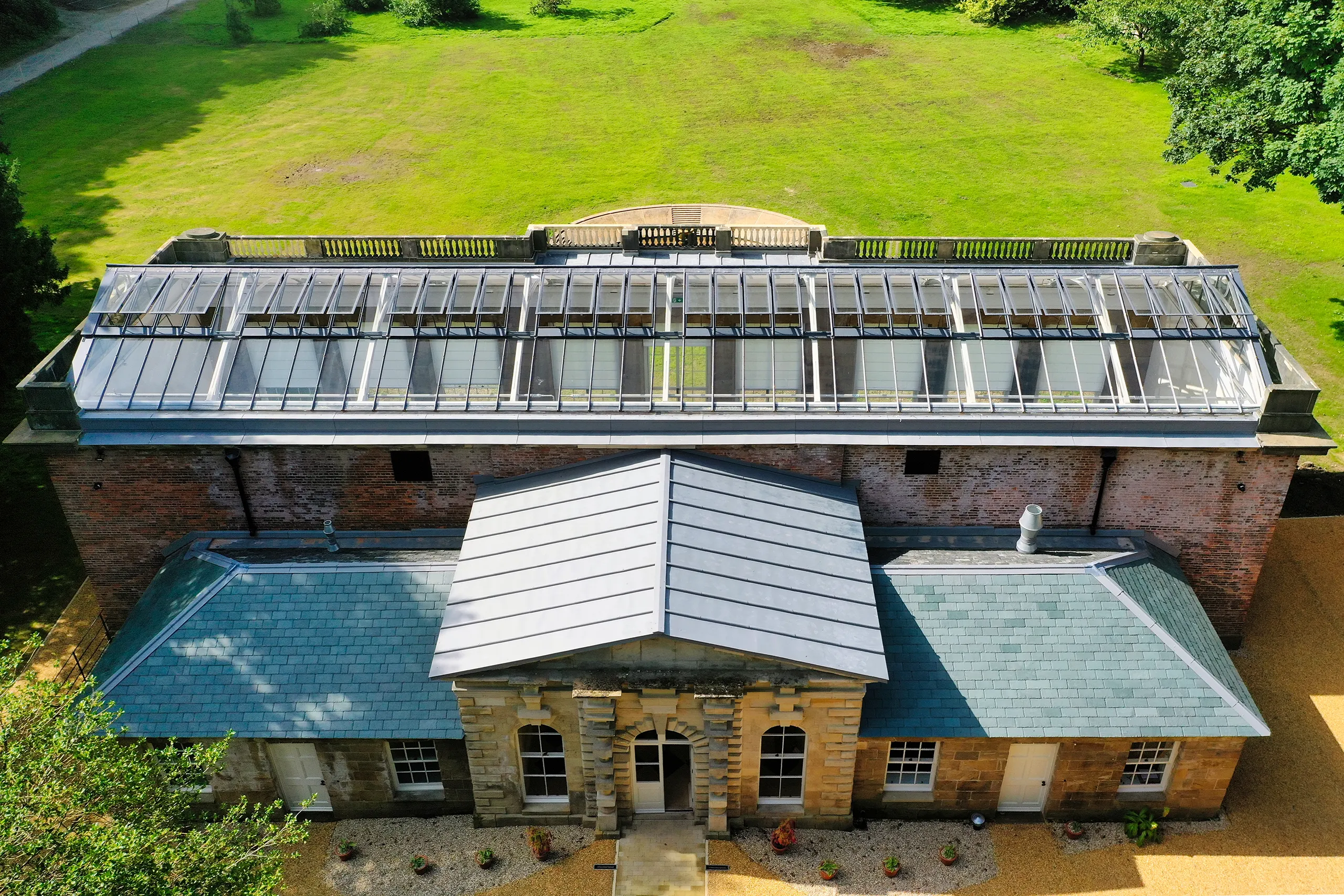Solar Heat Gain is mainly a positive effect associated with your roof glazing. All year round our patent glazing systems will allow free light and heat to enter into your building or home.
Solar Heat Gain

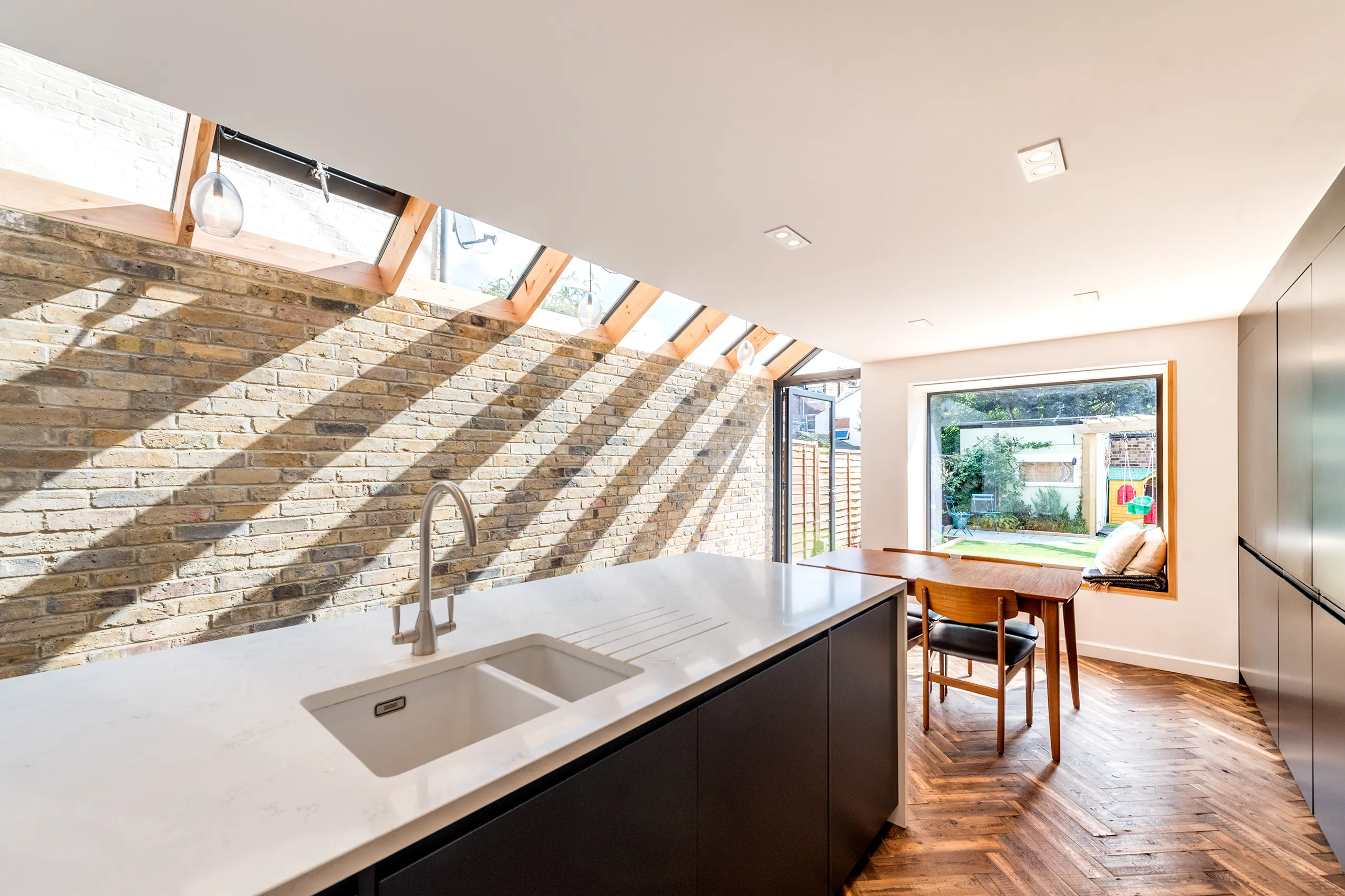
The sun’s natural rays of light will improve the quality of your working and living area as well as lower your central heating bills during the daylight hours.
For the three summer months of the year (if we are lucky) the solar heat and light entering into your space may not be as welcome as the other nine months certainly are. There are various options for reducing this unwanted heat source and glare by means of using solar control glass and solar shading devices.
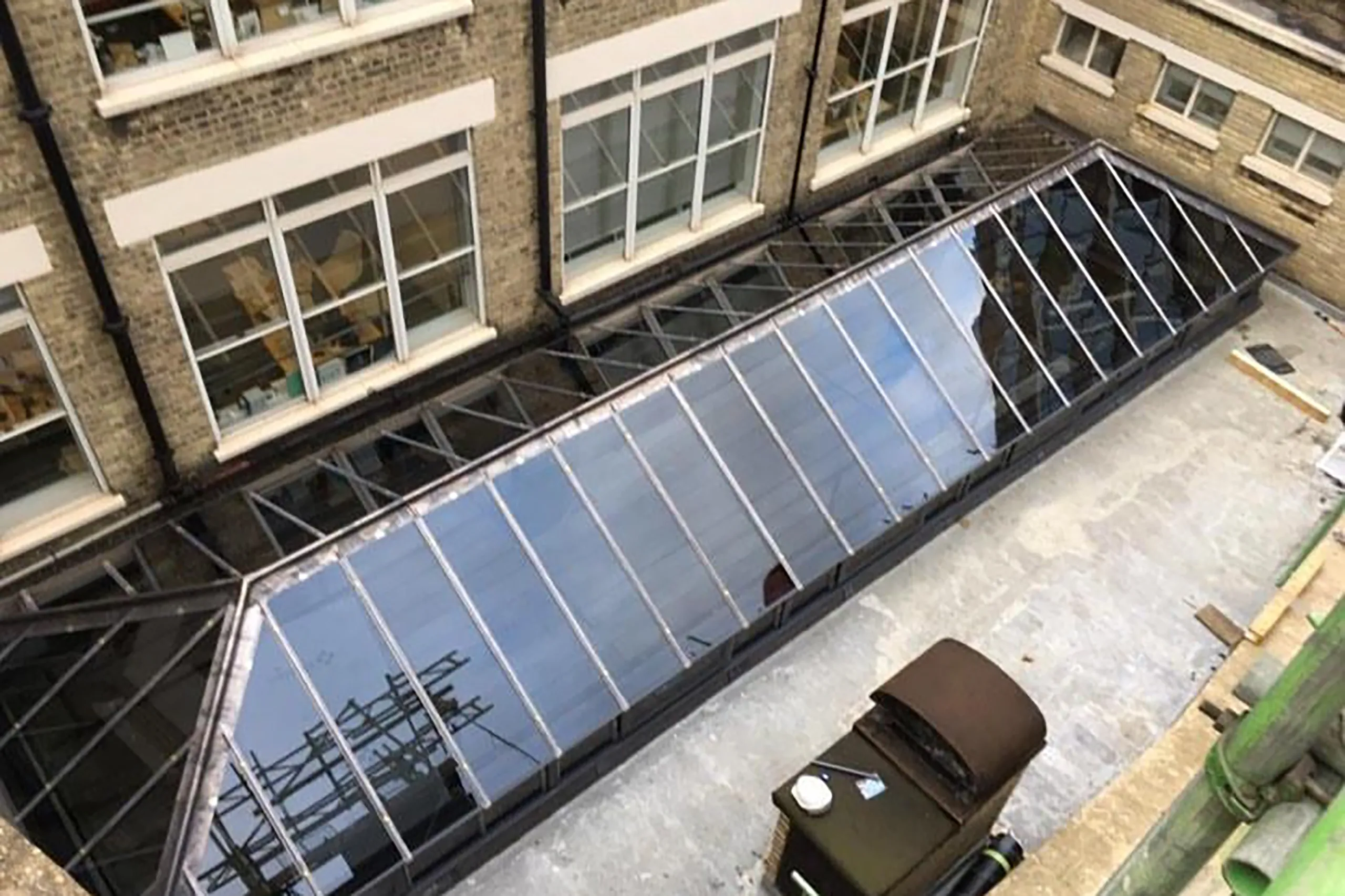
Heat & Glare Reduction
Depending on the positioning of the roof glazing, glare may become an issue. There are many solar control glasses available that can significantly reduce solar heat and also light transmission values but glare is still a difficult problem to solve by glass choice alone. On south facing roof glazing, to totally eliminate glare you must eliminate the vast majority of light passing through the glass.
The designers of large factories and mills in the 19th and 20th centuries were aware of the need of free light during daylight hours to lower the need of artificial lighting. Glare would also be a problem if the factory workers were exposed to this. Northlights became the best solution. Large areas of glazing were introduced into buildings which were not subjected to the intense power of the sun. They were positioned to face in a northerly direction and had a steep pitch of usually 60°.
Intelligent positioning of your roof glazing is the first priority for new build projects. If your roof glazing is planned to be south facing then we recommend using a high performance solar control glass that reduces heat and light transmission or to incorporate internal blinds that can be used when the sun is too overbearing.
If you do not wish to use blinds on south facing designs then your glass choice should be considered carefully. We would recommend using a high performance solar control glass that blocks at least 50% of light from entering the building. Please note that glare will still be an issue at certain times.
An example of this approach in practice is the Orangery at Ingestre, where our Rafterline glazing system combined solar control glass and ventilation to achieve both thermal efficiency and heritage preservation.
Shading Devices
Internal Blinds
The advantage of using internal blinds are that they only need to be used when you really require them. A high level light transmission glass can be installed to south facing glazing with all the benefits that are associated with it and the blinds can be used only when required during the year.
Important note: Close fitting Blinds must NEVER be installed underneath roof glazing if the inner pane of glass is a LAMINATED type. You must always use a toughened glass or a special (and significantly more expensive) heat strengthened laminated composite to prevent the high possibility of thermal fracturing occurring to the laminated pane. We have also regularly applied a factory fitted anti-shatter film to toughened glass for use in schools where blinds will be used in close proximity to the glazing and where toughened glass is not desired as an inner pane.
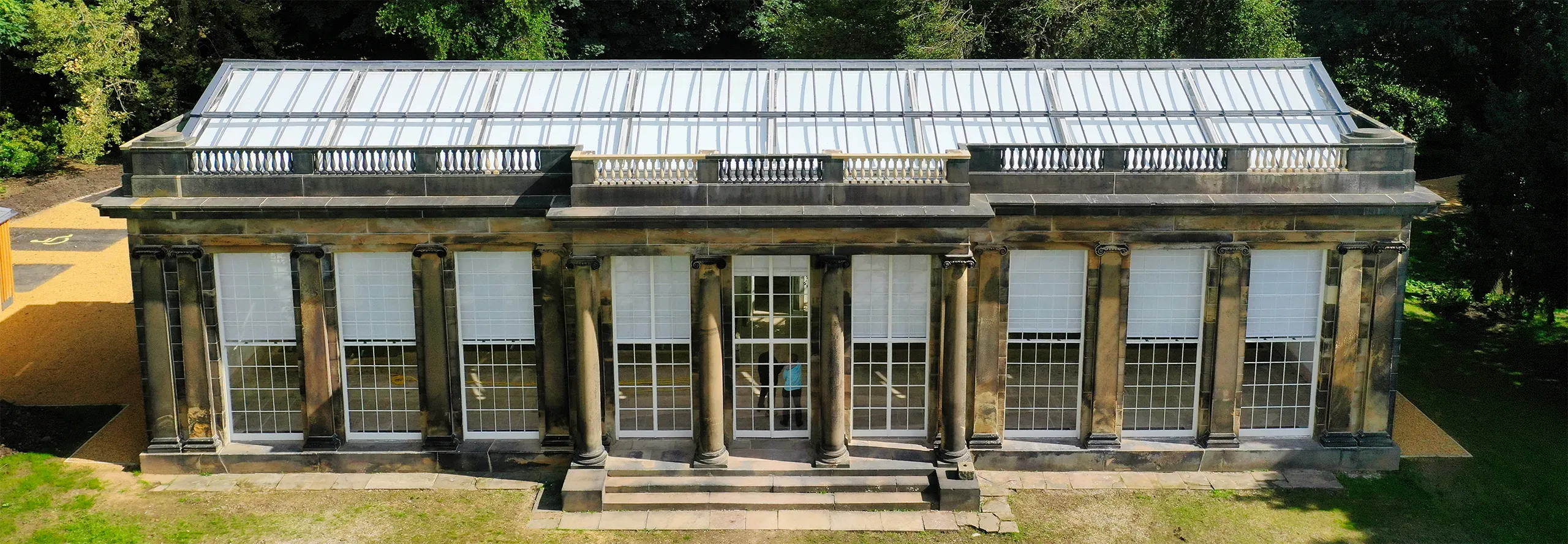
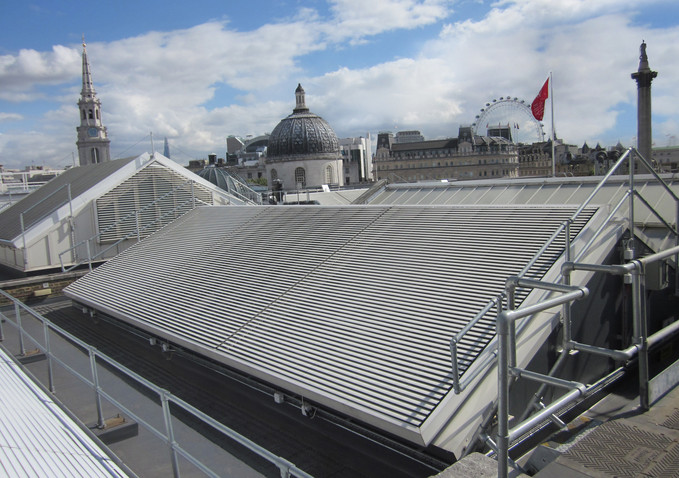
External Blinds/Louvres
We have carried out several projects where external blinds/louvres have been installed directly onto the outside of our roof patent glazing systems. This option is usually reserved for high end projects on museums and art galleries where the blinds/louvres are electrically controlled and programmed to open/close depending on the sun’s positions and brightness. Please contact us for further details regarding our requirements for this option.
Ventilation
Solar heat gain can be somewhat alleviated by the use of ventilation within the roof glazing system. We can incorporate thermally broken aluminium framed opening vents as well as a single glazed opening vents to enable air flow within your room.
This is not a one step cure and would only help to maintain an internal temperature similar to the external temperature within your room if the roof glazing is exposed to direct sunlight.
It is recommended that ventilation combined with the use of solar control glass and/or solar shading devices will always provide the best results in creating a comfortable internal environment for the building user.
